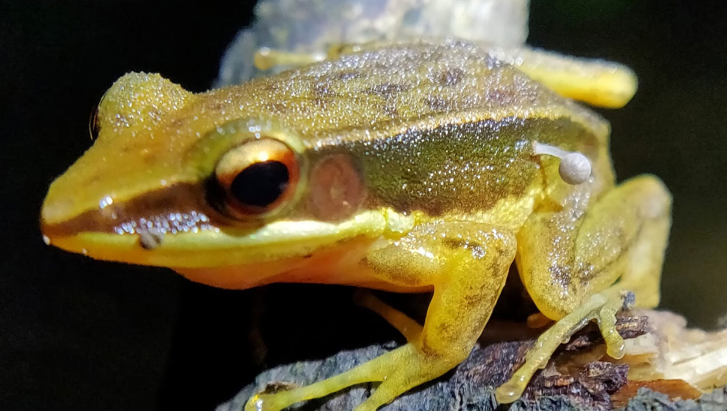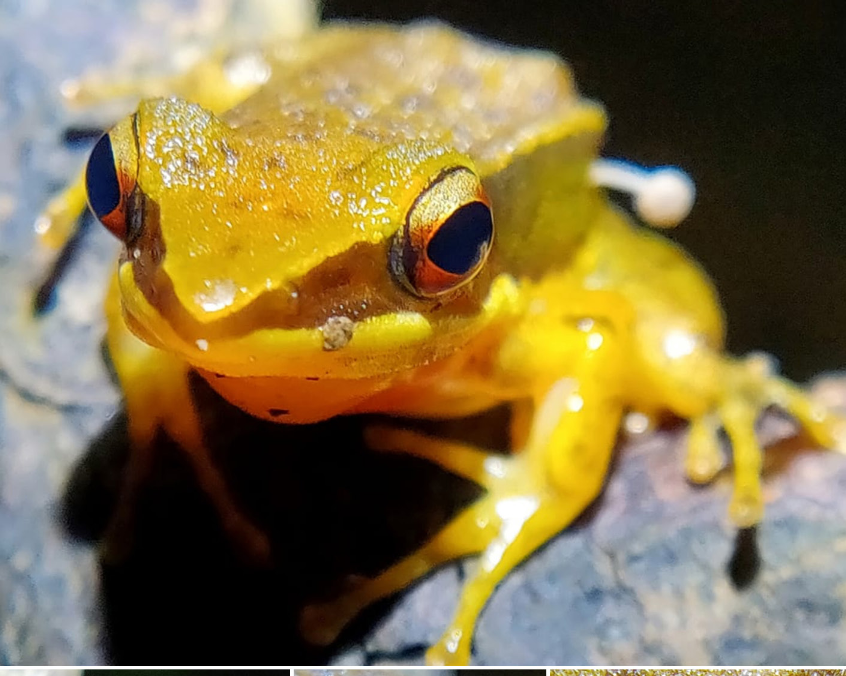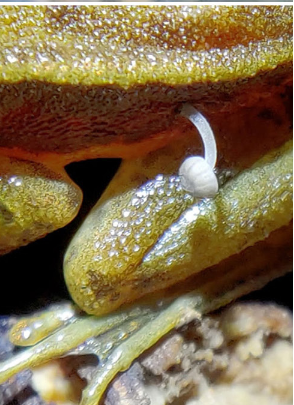A frog is found with a mushroom growing on its back. The discovery is baffling scientists.

The cordyceps fungus of "The Last of Us" may not pose a real risk of zombie-fying humankind, but can the same be said of our amphibian friends?
Indian scientists on a nature walk through the foothills of the Western Ghats came across an unexpected discovery: a living frog that seemed to have a mushroom sprouting from its back.
The group of five explorers had been on the lookout for reptiles and amphibians while hiking along the bottom of the mountain range in June. But when they came across a small roadside pond packed with about 40 tiny frogs, they noticed something odd about one of them.
Perched on a twig, the frog had a bizarre growth on its left flank that, upon closer examination, was clearly a small gray mushroom. Even more strange, unlike the creatures of "The Last of Us," the critter seemed unbothered by its fungal partner.
Hobbyist naturalist Chinmay Maliye and Lohit Y.T., a river and wetlands specialist at World Wildlife Fund-India, were quick to photograph the discovery before the group continued onward.
“To the best of our knowledge, never has a mushroom sprouting from the flank of a live frog been documented,” the team wrote in a report in January documenting the finding in the journal Reptiles and Amphibians.
Meet Fluffy: Alligator snapping turtle found far from home in English pond
What do we know about golden-backed frogs?
The frog was among dozens of Rao’s Intermediate Golden-backed frogs (Hylarana intermedia) packing the pond.
The frogs, which are about the size of a human thumb, are native to the region and are found in abundance in the Western Ghats, the authors wrote.
On that day in June, the tropical foothills were bursting with the croaks of the frogs as Lohit, Maliye and their team tromped through the terrain on a herpetology hunt. They had no idea their search for reptiles and amphibians would turn into a fungus find.
When they spotted the frog with the mushroom attached amid a congregation of Rao’s Intermediate Golden-backed frogs, they decided to leave it undisturbed beyond a brief photoshoot.
Lohit posted the close-up images of the frog online in the nature journal to see if any citizen scientists could identify the fungal growth.

Why do experts consider the mushroom discovery so strange?
Lohit was not disappointed.
Mushroom enthusiasts and experts alike jumped in to suggest it could be a bonnet mushroom in the genus Mycena. This type of mushroom primarily thrives on decaying organic matter like plants and rotting wood, which is why experts were baffled about why one was seemingly growing on a living frog.
Although plenty of fungi grow on living things, including the yeast that grows on our skin, most don't become mushrooms. For a mushroom to grow, a fungal spore has to find a viable home on some sort of surface before it can produce mycelia, similar to a plant's root. The mycelia produces a mushroom only if it finds enough nutrients to grow.

Living creatures and fungus are often a fatal pairing, even if not quite as dramatic as the stalkers, clickers and bloaters hunting Joel and Ellie in "The Last of Us."
While the cordyceps fungus from the hit video game turned HBO series is real, the fungus takes over only the bodies and brains of ants and other insects before killing them. But in the case of this unusual frog-fungus pair, the animal and the mushroom both appeared to be alive and well.
“The frog was not collected, so no prognosis is possible,” the authors wrote.
Perhaps, though, some other intrepid explorers will be inspired to trek back out into the Ghats to seek and collect a sample frog – if it hasn't yet turned into a zombie.
Eric Lagatta covers breaking and trending news for USA TODAY. Reach him at elagatta@gannett.com
This article originally appeared on USA TODAY: Mushroom growing on a frog in India: Why it's surprising scientists

